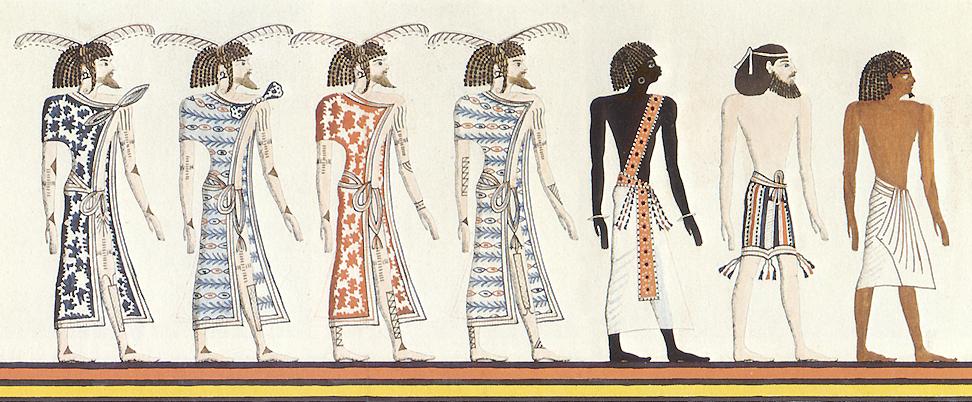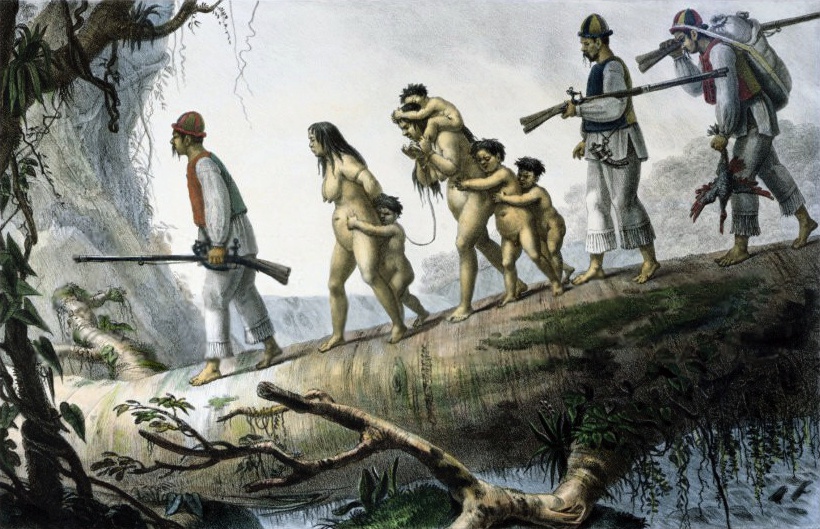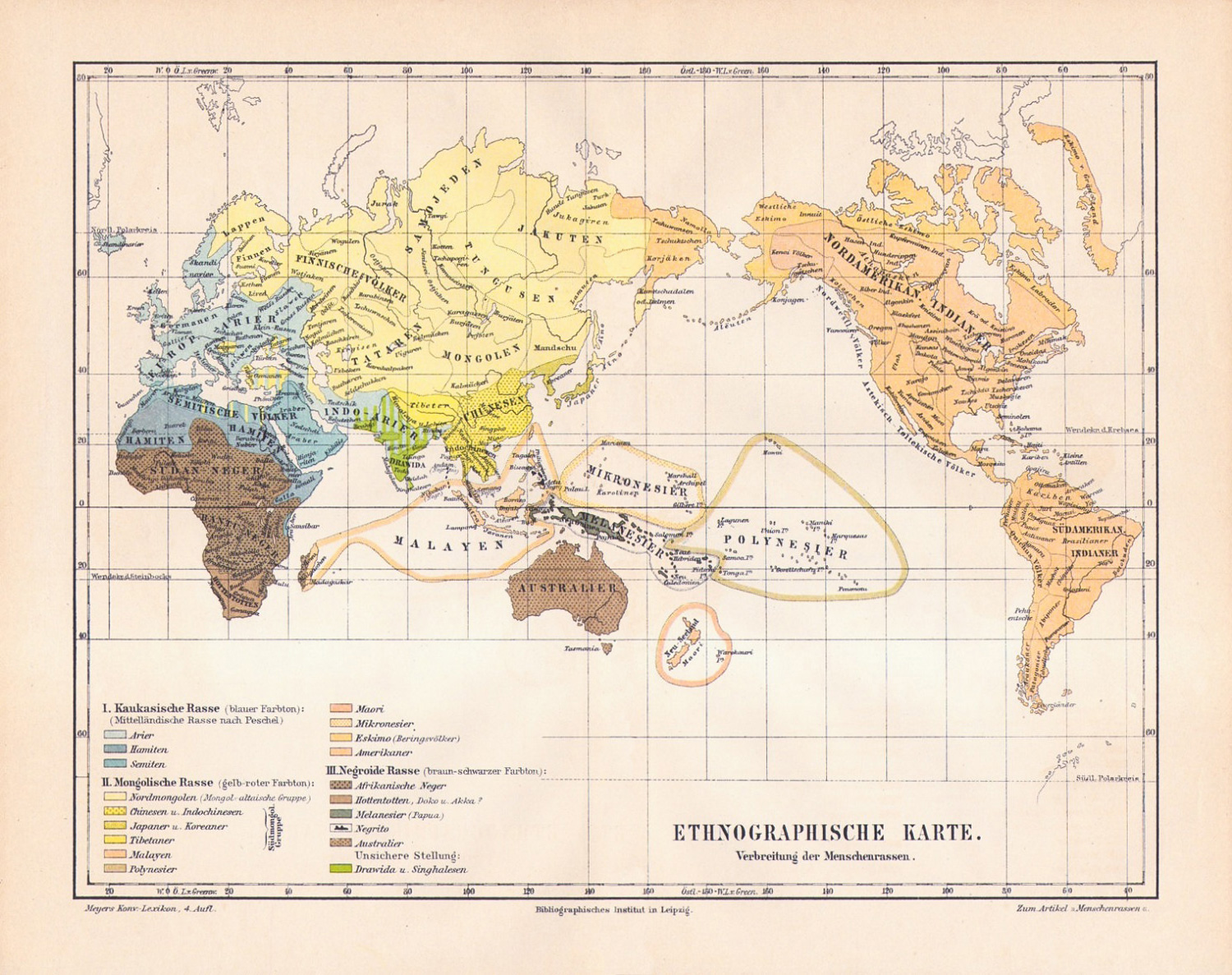|
Pardo Brazilian
In Brazil, Pardo () is an ethno-racial and skin color category used by the Brazilian Institute of Geography and Statistics (IBGE) in the Brazilian censuses. The term "''pardo''" is a complex one, more commonly used to refer to Brazilians of mixed ethnic ancestries. Pardo Brazilians represent a diverse range of skin colors and ethnic backgrounds. The other recognized census categories are ''branco'' ("white"), ''preto'' ("black"), '' amarelo'' ("yellow", meaning ethnic East Asians), and ''indígena'' ("indigene" or "indigenous person", meaning Amerindians). The term was and is still commonly used, in popular culture and the media, to refer to Brazilians of multi ethnic backgrounds. Definitions According to IBGE (Brazilian Institute of Geography and Statistics), ''pardo'' is a broad classification that encompasses multiracial Brazilians such as '' mulatos'' and '' cafuzos'', as well as assimilated Amerindians known as '' caboclos'', mixed with Southern Europeans or not. The ... [...More Info...] [...Related Items...] OR: [Wikipedia] [Google] [Baidu] |
North Brazil
The North Region of Brazil ( ) is the largest region of Brazil, accounting for 45.27% of the national territory. It has the second-lowest population of any region in the country, and accounts for a minor percentage of the national GDP. The region is slightly larger than India and slightly smaller than the whole European Union. It comprises the states of Acre, Amapá, Amazonas, Pará, Rondônia, Roraima, and Tocantins. It has the lowest population density out of all the regions of Brazil, with only 4.5 inhabitants per km2. Most of the population is centered in urban areas. Belém International Airport and Eduardo Gomes International Airport, Manaus International Airport connect the North Region with many Brazilian cities and also operate some international flights. The region is home to the Federal University of Amazonas and the Federal University of Pará, among others. History The first inhabitants of the North Region, as in the rest of Brazil, were the Indigenous peoples in B ... [...More Info...] [...Related Items...] OR: [Wikipedia] [Google] [Baidu] |
East Asia
East Asia is a geocultural region of Asia. It includes China, Japan, Mongolia, North Korea, South Korea, and Taiwan, plus two special administrative regions of China, Hong Kong and Macau. The economies of Economy of China, China, Economy of Japan, Japan, Economy of South Korea, South Korea, and Economy of Taiwan, Taiwan are among the world's largest and most prosperous. East Asia borders North Asia to the north, Southeast Asia to the south, South Asia to the southwest, and Central Asia to the west. To its east is the Pacific Ocean. East Asia, especially History of China, Chinese civilization, is regarded as one of the earliest Cradle of civilization#China, cradles of civilization. Other ancient civilizations in East Asia that still exist as independent countries in the present day include the History of Japan, Japanese, History of Korea, Korean, and History of Mongolia, Mongolian civilizations. Various other civilizations existed as independent polities in East Asia in the past ... [...More Info...] [...Related Items...] OR: [Wikipedia] [Google] [Baidu] |
Asian Brazilians
Asian Brazilians () refers to Brazilian citizens or residents of Asian ancestry. The vast majority trace their origins to Western Asia, particularly Lebanon, or East Asia, namely Japan. The Brazilian census does not use "Asian" as a racial category, though the term "yellow" (''amarela'' in Portuguese) refers to people of East Asian ethnic origin. Beyond the descendants from West Asia and East Asia, there has also been much smaller immigration from Southeast Asia and South Asia, as well as those from the Asian diaspora in the Caribbean and Mozambique. Brazil has the largest community of Japanese descendants outside of Japan. Japanese immigrants started to move to Brazil in 1908, were directed to the Brazilian coffee plantations. History Recent research has suggested that Asians from the early Portuguese Eastern Empire, known as Luso-Asians first came to Brazil during the sixteenth century as seamen known as Lascars, or as servants, slaves and concubines accompanying the gove ... [...More Info...] [...Related Items...] OR: [Wikipedia] [Google] [Baidu] |
Black People
Black is a racial classification of people, usually a political and skin color-based category for specific populations with a mid- to dark brown complexion. Not all people considered "black" have dark skin and often additional phenotypical characteristics are relevant, such as facial and hair-texture features; in certain countries, often in socially based systems of racial classification in the Western world, the term "black" is used to describe persons who are perceived as dark-skinned compared to other populations. It is most commonly used for people of sub-Saharan African ancestry, Indigenous Australians and Melanesians, though it has been applied in many contexts to other groups, and is no indicator of any close ancestral relationship whatsoever. Indigenous African societies do not use the term ''black'' as a racial identity outside of influences brought by Western cultures. Contemporary anthropologists and other scientists, while recognizing the reality of biological ... [...More Info...] [...Related Items...] OR: [Wikipedia] [Google] [Baidu] |
White People
White is a Race (human categorization), racial classification of people generally used for those of predominantly Ethnic groups in Europe, European ancestry. It is also a Human skin color, skin color specifier, although the definition can vary depending on context, nationality, ethnicity and point of view. Description of populations as "White" in reference to their skin color is occasionally found in Greco-Roman ethnography and other ancient or medieval sources, but these societies did not have any notion of a White race or pan-European identity. The term "White race" or "White people", defined by their light skin among other physical characteristics, entered the major European languages in the later seventeenth century, when the concept of a "unified White" achieved greater acceptance in Europe, in the context of racialization, racialized slavery and social status in the European colonies. Scholarship on Race (human categorization), race distinguishes the modern concept from ... [...More Info...] [...Related Items...] OR: [Wikipedia] [Google] [Baidu] |
Mixed-race Brazilian
Brazilian censuses do not use a "multiracial" category. Instead, the censuses use skin colour categories. Most Brazilians of visibly mixed racial origins self-identify as pardos. According to the 2022 census, "pardos" make up 92.1 million people or 45.3% of Brazil's population. According to some DNA researches, Brazilians predominantly possess a great degree of mixed-race ancestry, though less than half of the country's population classified themselves as "pardos" in the census. This is not seen as any kind of misclassification, since the census categories are not and do not intend to be, based on ancestry, but rather on skin colour. History Before the arrival of the Portuguese in 1500, Brazil was inhabited by nearly five million Amerindians. The Portuguese colonization of Brazil started in the sixteenth century. In the first two centuries of colonization, 100,000 Portuguese arrived in Brazil (around 500 colonists per year). In the eighteenth century, 600,000 Portuguese ... [...More Info...] [...Related Items...] OR: [Wikipedia] [Google] [Baidu] |
Brazilian Institute Of Geography And Statistics
The Brazilian Institute of Geography and Statistics (; IBGE) is the agency responsible for official collection of statistical, geographic, cartographic, geodetic and environmental information in Brazil. IBGE performs a decennial national census; questionnaires account for information such as age, household income, literacy, education, occupation and hygiene levels. IBGE is a public institute created in 1936 under the name ''National Institute of Statistics''. Its founder and chief proponent was statistician Mário Augusto Teixeira de Freitas. The current name dates from 1938. Its headquarters are located in Rio de Janeiro, and its current president is Marcio Pochmann, replacing Eduardo Rios Neto. It was made a federal agency by Decree-Law No. 161 on February 13, 1967, and is linked to the Ministry of the Economy, inside the Secretariat of Planning, Budget and Management. Structure IBGE has a network of national research and dissemination components, comprising: * 27 ... [...More Info...] [...Related Items...] OR: [Wikipedia] [Google] [Baidu] |
Race (human Categorization)
Race is a categorization of humans based on shared physical or social qualities into groups generally viewed as distinct within a given society. The term came into common usage during the 16th century, when it was used to refer to groups of various kinds, including those characterized by close kinship relations. By the 17th century, the term began to refer to physical ( phenotypical) traits, and then later to national affiliations. Modern science regards race as a social construct, an identity which is assigned based on rules made by society. While partly based on physical similarities within groups, race does not have an inherent physical or biological meaning. The concept of race is foundational to racism, the belief that humans can be divided based on the superiority of one race over another. Social conceptions and groupings of races have varied over time, often involving folk taxonomies that define essential types of individuals based on perceived traits. Modern scienti ... [...More Info...] [...Related Items...] OR: [Wikipedia] [Google] [Baidu] |
Brazil
Brazil, officially the Federative Republic of Brazil, is the largest country in South America. It is the world's List of countries and dependencies by area, fifth-largest country by area and the List of countries and dependencies by population, seventh-largest by population, with over 212 million people. The country is a federation composed of 26 Federative units of Brazil, states and a Federal District (Brazil), Federal District, which hosts the capital, Brasília. List of cities in Brazil by population, Its most populous city is São Paulo, followed by Rio de Janeiro. Brazil has the most Portuguese-speaking countries, Portuguese speakers in the world and is the only country in the Americas where Portuguese language, Portuguese is an Portuguese-speaking world, official language. Bounded by the Atlantic Ocean on the east, Brazil has a Coastline of Brazil, coastline of . Covering roughly half of South America's land area, it Borders of Brazil, borders all other countries and ter ... [...More Info...] [...Related Items...] OR: [Wikipedia] [Google] [Baidu] |
East Asian Brazilians
Asian Brazilians () refers to Brazilian citizens or residents of Asian ancestry. The vast majority trace their origins to Western Asia, particularly Lebanon, or East Asia, namely Japan. The Brazilian census does not use "Asian" as a racial category, though the term "yellow" (''amarela'' in Portuguese) refers to people of East Asian ethnic origin. Beyond the descendants from West Asia and East Asia, there has also been much smaller immigration from Southeast Asia and South Asia, as well as those from the Asian diaspora in the Caribbean and Mozambique. Brazil has the largest community of Japanese descendants outside of Japan. Japanese immigrants started to move to Brazil in 1908, were directed to the Brazilian coffee plantations. History Recent research has suggested that Asians from the early Portuguese Eastern Empire, known as Luso-Asians first came to Brazil during the sixteenth century as seamen known as Lascars, or as servants, slaves and concubines accompanying the gover ... [...More Info...] [...Related Items...] OR: [Wikipedia] [Google] [Baidu] |
Native Brazilians
Indigenous peoples in Brazil or Native Brazilians () are the peoples who lived in Brazil before European contact around 1500 and their descendants. Indigenous peoples once comprised an estimated 2,000 district tribes and nations inhabiting what is now Brazil. The 2010 Brazil census recorded 305 ethnic groups of Indigenous people who spoke 274 Indigenous languages; however, almost 77% speak Portuguese. Historically, many Indigenous peoples of Brazil were semi-nomadic and combined hunting, fishing, and gathering with migratory agriculture. Many tribes were massacred by European settlers, and others assimilated into the growing European population Brazilian population. The Indigenous population was decimated by European diseases, declining from a pre-Columbian high of 2 million to 3 million to approximately 300,000 by 1997, distributed among 200 tribes. According to the 2022 IBGE census, 1,693,535 Brazilians classified themselves as Indigenous, and the census recorded 274 Indige ... [...More Info...] [...Related Items...] OR: [Wikipedia] [Google] [Baidu] |







